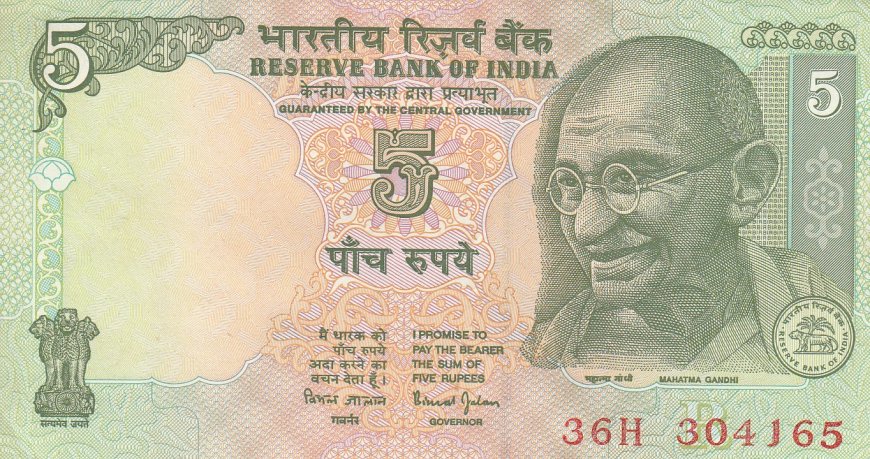five rupee indian currency notes
The Indian 5-rupee note is the second smallest Indian note in circulation. The Reserve Bank of India introduced the 5 rupee banknote as part of the Mahatma Gandhi Series in 1996.

As of my knowledge cutoff in September 2021, the five rupee note is one of the commonly used denominations in Indian currency. Here are some details about the five rupee Indian currency notes:
-
Denomination: The five rupee note is the second smallest paper currency denomination in India, following the one rupee note.
-
Design: The design of the five rupee note has evolved over time. The earlier versions featured the portrait of Mahatma Gandhi on the front side, along with the Reserve Bank of India's seal and the signature of the Governor. The reverse side typically depicted various historical or cultural monuments or important figures.
-
Security Features: Five rupee notes, like other Indian currency notes, have security features to prevent counterfeiting. These features may include watermarks, security threads, latent images, and microprinting.
-
Material: The earlier versions of the five rupee note were made of paper. However, in recent years, the Reserve Bank of India has introduced polymer-based notes for increased durability and longevity.
-
Availability: The five rupee note is generally available and widely accepted for transactions across the country. It can be used for daily purchases, transportation fares, and other small transactions.
-
Commemorative Issues: Occasionally, the Reserve Bank of India issues commemorative five rupee notes to mark special events, achievements, or personalities. These limited edition notes are not intended for regular circulation and are usually collector's items.
Please note that the design and availability of currency denominations may change over time, so it's always advisable to consult reliable sources or financial institutions for the most up-to-date information.
What's Your Reaction?




















































